Family: Tenthredinidae
Family common name: common sawflies
Subfamily: Nematinae
Tribe: Nematini
Genus: Fallocampus Wong, 1977
Subgenera: none
The Tenthredinidae are the most species-rich family and are found throughout the world, in all continents but Antarctica. They are known as the “common sawflies.” They can generally be recognized by a cylindrical body and long, segmented antennaeantenna:
the sensory organ emerging from the front of the head, usually between the compound eyes and above the clypeus; includes the flagellum, scape and pedicel
 . Otherwise, they come in a variety of colors, sizes, and forms (Goulet 1992Goulet 1992:
. Otherwise, they come in a variety of colors, sizes, and forms (Goulet 1992Goulet 1992:
Goulet H. 1992. The genera and subgenera of the sawflies of Canada and Alaska: Hymenoptera. Symphyta. The insects and arachnids of Canada. Part 20. Agriculture Canada Publication.).
Nematinae is the second-largest subfamily of Tenthredinidae, with over 1,250 species (Prous et al. 2014Prous et al. 2014:
Prous M, Blank SM, Goulet H, Heibo E, Liston A, Malm T, Nyman T, Schmidt S, Smith DR, Varing;rdal H, Viitasaari M, Vikberg V, and Taeger A. 2014. The genera of Nematinae (Hymenoptera, Tenthredinidae). Journal of Hymenoptera Research 40: 1-69. " target="_blank">https://doi.org/10.3897/JHR.40.7442). They are most diverse in northern Eurasia and North America; only a few species occur in the Southern Hemisphere. Nematinae sawflies have a variety of feeding habits including external leaf feeding, leaf mining, and gall forming, and feed on a variety of hosts (Smith 2003bSmith 2003b:
Smith DR. 2003b. A Synopsis of the sawflies (Hymenoptera: Symphyta) of America south of the United States: Tenthredinidae (Nematinae, Heterarthrinae, Tenthredininae). Transactions of the American Entomological Society 129 (1): 1-45.).
The Nematinae have been subject to numerous revisions in recent years. As of 2021, there are no comprehensive keys to many of the North American species of Nematinae (Prous et al. 2014Prous et al. 2014:
Prous M, Blank SM, Goulet H, Heibo E, Liston A, Malm T, Nyman T, Schmidt S, Smith DR, Varing;rdal H, Viitasaari M, Vikberg V, and Taeger A. 2014. The genera of Nematinae (Hymenoptera, Tenthredinidae). Journal of Hymenoptera Research 40: 1-69. " target="_blank">https://doi.org/10.3897/JHR.40.7442). Because of changing taxonomy and extreme variability in morphology, identifying genera and species in the Nematinae may be more challenging than in other subfamilies of Tenthredindae. For this reason, knowing the host or behaviors of a specimen can be extremely helpful for identification within this subfamily.
Fallocampus are about 4–7 mm in length and mostly yellow in color, with variable black markings and clear wings (Smith 1976aSmith 1976a:
Smith DR. 1976a. Sawflies of the Holarctic genus Platycampus Schioslash;dte (Hymenoptera: Tenthredinidae). Proceedings of the Entomological Society of Washington 78 (2): 202.).
There are two described species worldwide, and they both occur in North America (Taeger et al. 2018Taeger et al. 2018:
Taeger A, Liston AD, Prous M, Groll EK, Gehroldt T, and Blank SM. 2018. ECatSymmdash;Electronic World Catalog of Symphyta (Insecta, Hymenoptera). Program version 5.0 (19 Dec 2018), data version 40 (23 Sep 2018). Senckenberg Deutsches Entomologisches Institut (SDEI), Muuml;ncheberg. https://sdei.de/ecatsym/ Accessed: 28 Jan 2020.).
A key to species of Fallocampus (as Platycampus) is included in Smith 1976aSmith 1976a:
Smith DR. 1976a. Sawflies of the Holarctic genus Platycampus Schioslash;dte (Hymenoptera: Tenthredinidae). Proceedings of the Entomological Society of Washington 78 (2): 202..
Subfamily characters
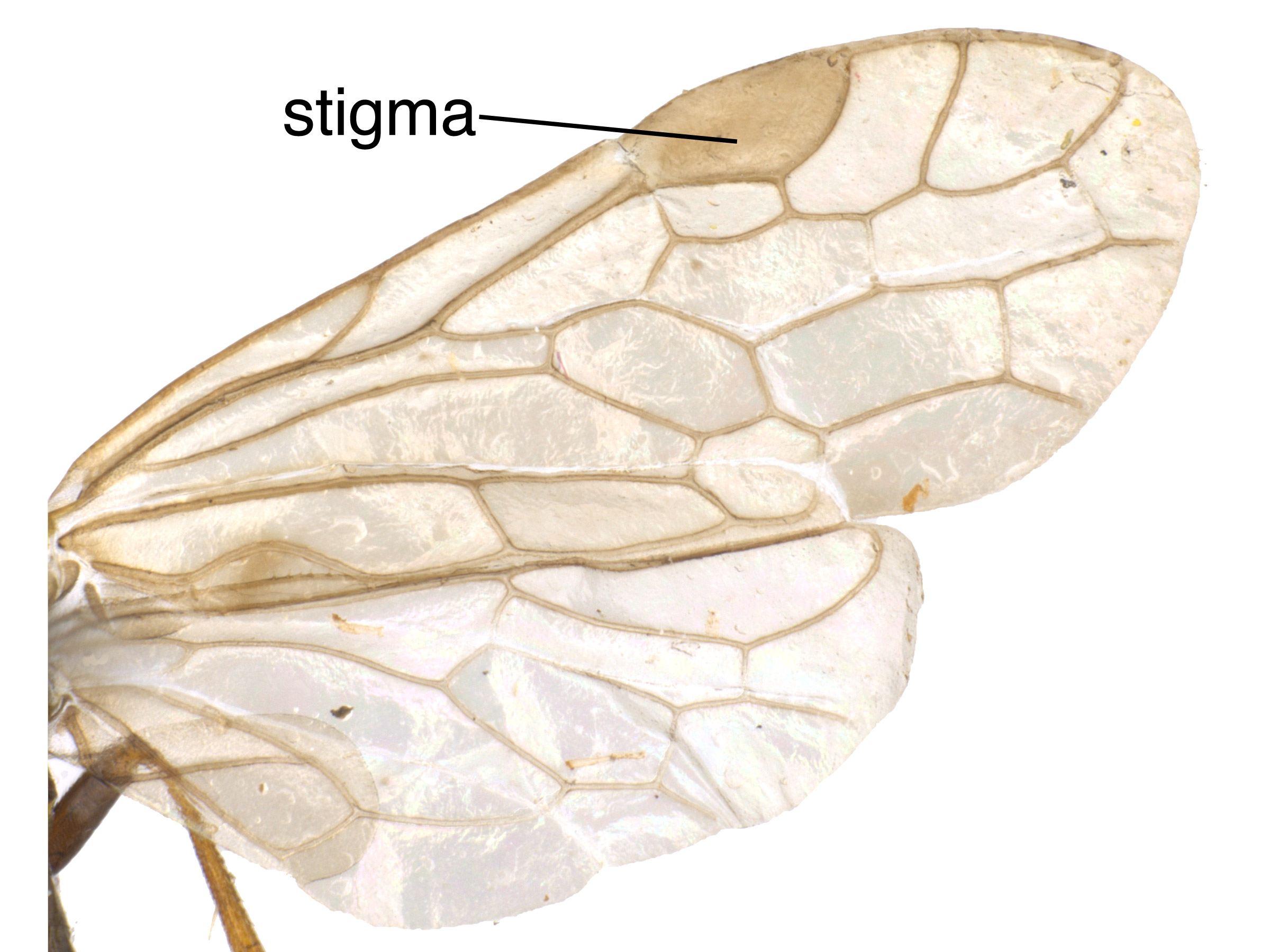 (Goulet 1992Goulet 1992:
(Goulet 1992Goulet 1992: vein 2m-cu meeting cellcell:
vein 2m-cu meeting cellcell: 1Rs above (Goulet 1992Goulet 1992:
1Rs above (Goulet 1992Goulet 1992:Genus characters
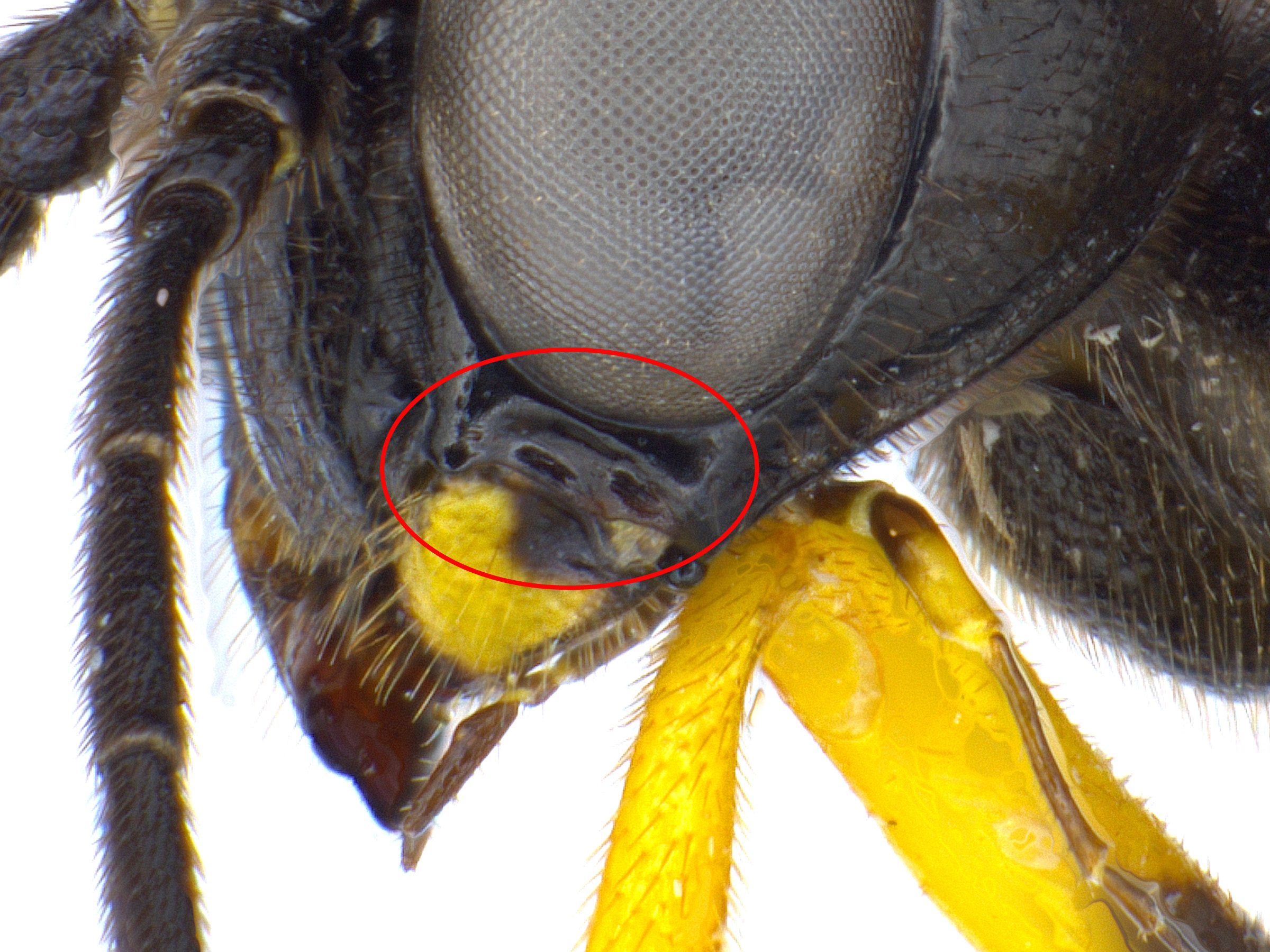 wide, longer than diameter of front ocellusocellus:
wide, longer than diameter of front ocellusocellus: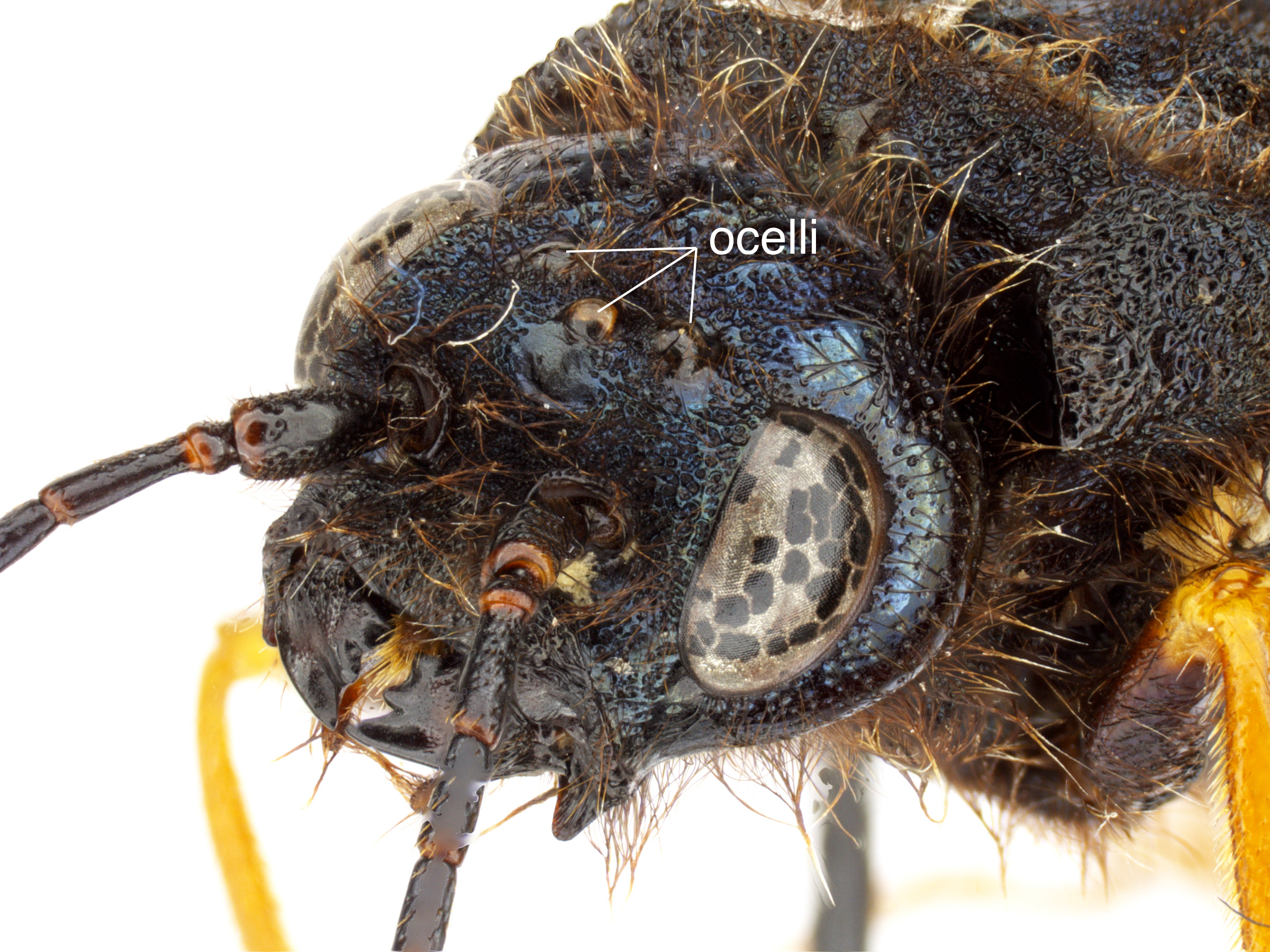 (Smith 1976cSmith 1976c:
(Smith 1976cSmith 1976c: as wide or wider than long (Smith 1976aSmith 1976a:
as wide or wider than long (Smith 1976aSmith 1976a: longer than third (Goulet 1992Goulet 1992:
longer than third (Goulet 1992Goulet 1992: costacosta:
costacosta: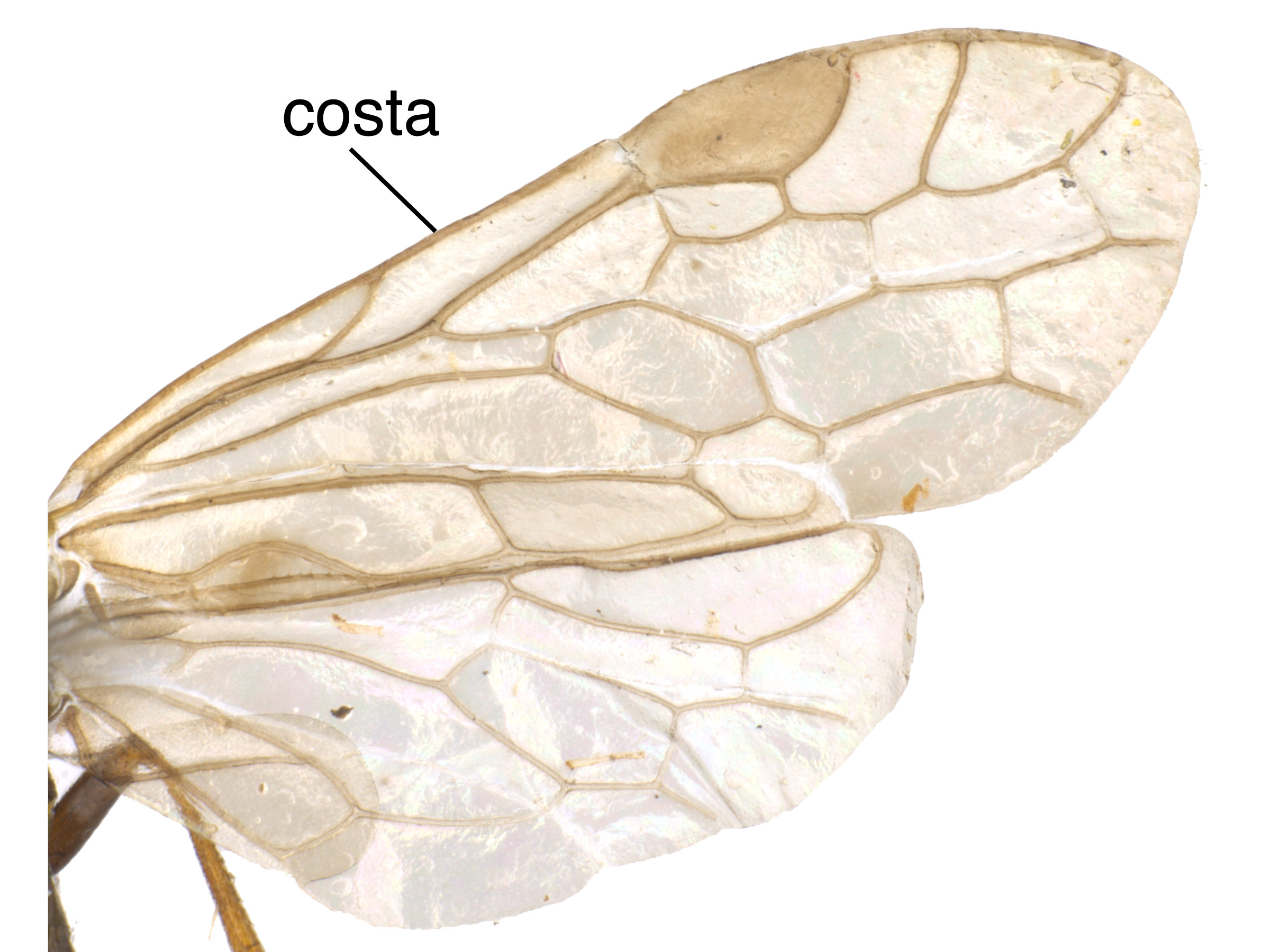 and stigmastigma:
and stigmastigma: yellow (Smith 1976aSmith 1976a:
yellow (Smith 1976aSmith 1976a: veins M and Rs+M relatively widely separated on veinvein:
veins M and Rs+M relatively widely separated on veinvein: R (Goulet 1992Goulet 1992:
R (Goulet 1992Goulet 1992: vein 2A+3A curved upwards and meeting 1A (Goulet 1992Goulet 1992:
vein 2A+3A curved upwards and meeting 1A (Goulet 1992Goulet 1992: vein 2r-rs absent (Prous et al. 2014Prous et al. 2014:
vein 2r-rs absent (Prous et al. 2014Prous et al. 2014: vein 2A meeting 1A; basalbasal:
vein 2A meeting 1A; basalbasal: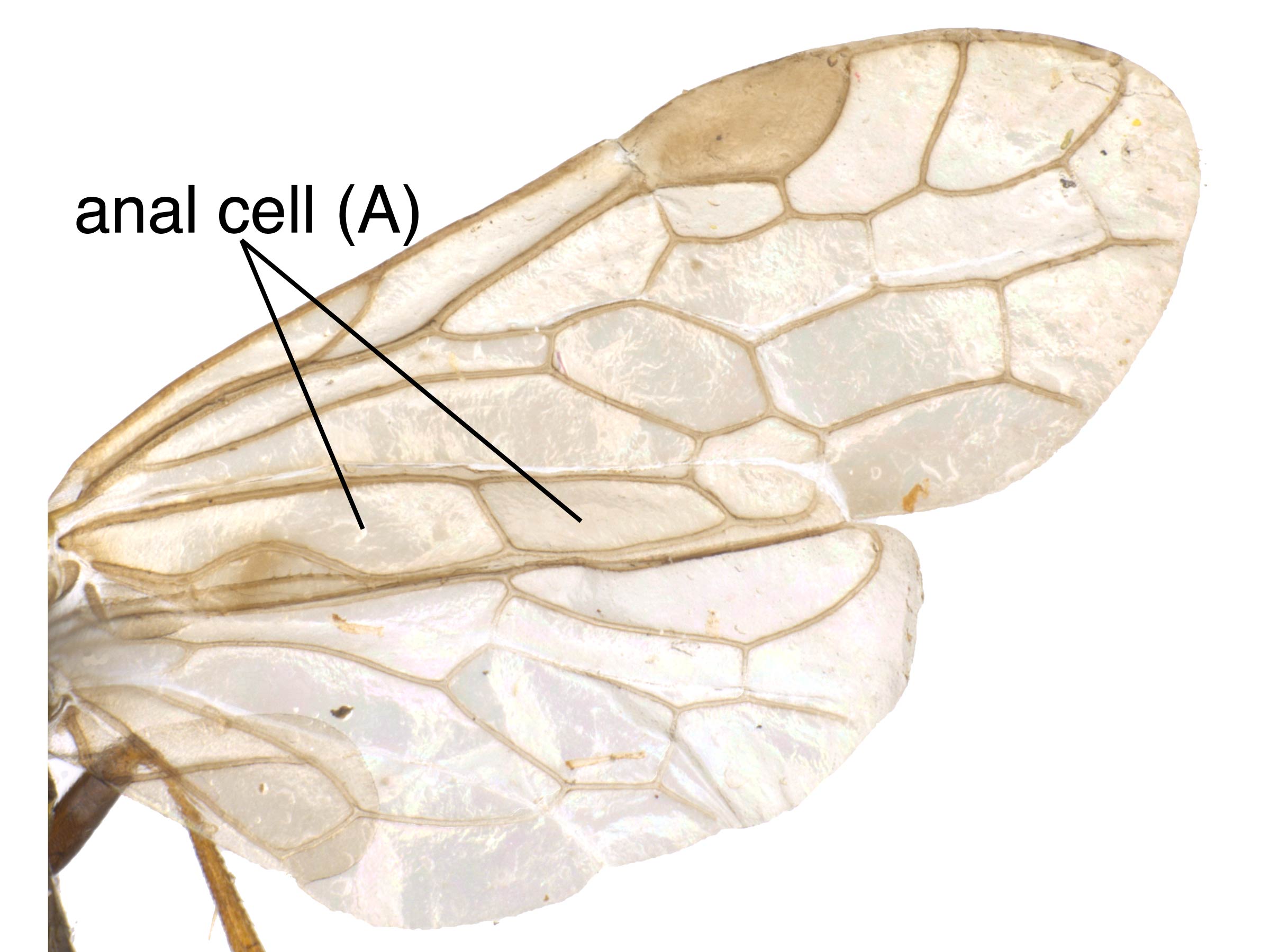 present (Goulet 1992Goulet 1992:
present (Goulet 1992Goulet 1992: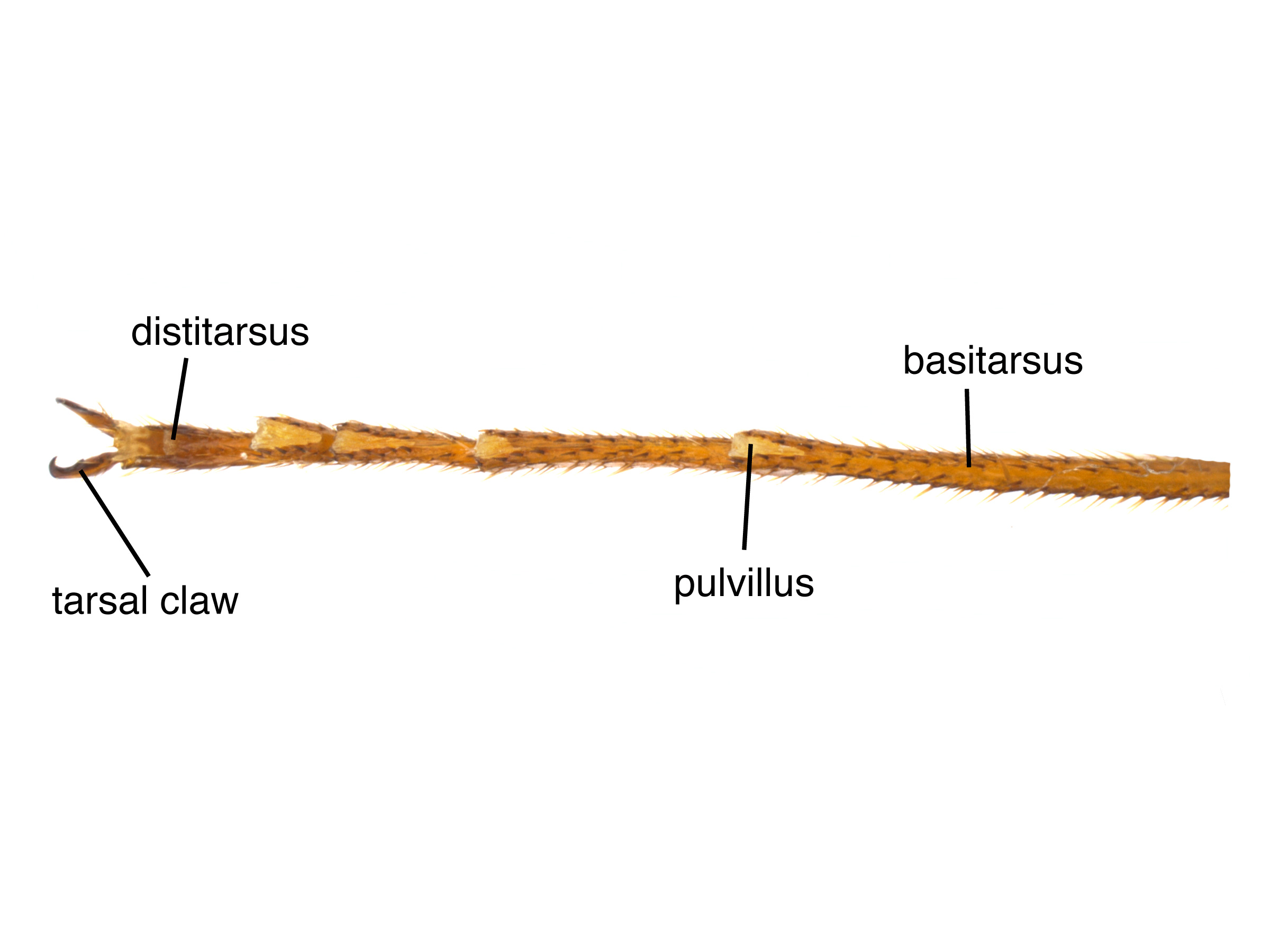 about half the length of the tarsomeretarsomere:
about half the length of the tarsomeretarsomere: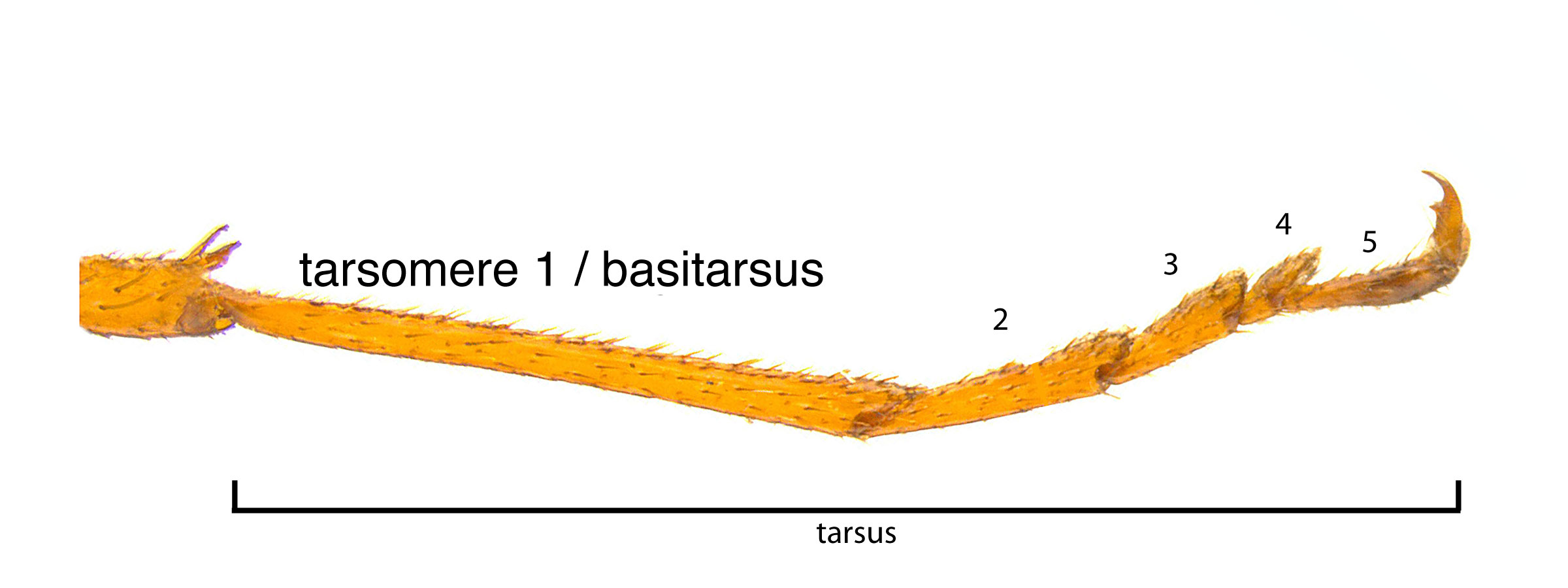 (Goulet 1992Goulet 1992:
(Goulet 1992Goulet 1992: with long inner tooth (Goulet 1992Goulet 1992:
with long inner tooth (Goulet 1992Goulet 1992:Fallocampus can be distinguished from other genera of Nematinae that have fore wingfore wing:
the anterior wing of each pair of wings; usually the largest wing of the pair
 vein 2A+3A curved upwards by the absence of fore wingfore wing:
vein 2A+3A curved upwards by the absence of fore wingfore wing:
the anterior wing of each pair of wings; usually the largest wing of the pair
 vein 2r-rs, the connection of veinvein:
vein 2r-rs, the connection of veinvein:
a tube-like, often darkened, structure on the wings
 2m-cu to cellcell:
2m-cu to cellcell:
1. a membranous area of the wing between veins, 2. a small cavity or closed space
 1Rs, and the long inner tooth of the tarsal clawtarsal claw:
1Rs, and the long inner tooth of the tarsal clawtarsal claw:
sharpened appendage emerging from the apex of the tarsus
 (Goulet 1992Goulet 1992:
(Goulet 1992Goulet 1992:
Goulet H. 1992. The genera and subgenera of the sawflies of Canada and Alaska: Hymenoptera. Symphyta. The insects and arachnids of Canada. Part 20. Agriculture Canada Publication.).
none
Fallocampus americanus feeds on Populus tremuloides (quaking aspen). Both that species and F. albostigmus may feed on other Populus species (Smith 1976cSmith 1976c:
Smith DR. 1976c. The xiphydriid woodwasps of North America (Hymenoptera: Xiphydriidae). Transactions of the American Entomological Society 102: 101-131., Wong 1977Wong 1977:
Wong HR. 1977. Fallocampus : a new sawfly genus for the Nearctic species of Platycampus Schioslash;dte (Hymenoptera: Tenthredinidae). The Canadian Entomologist 109 (8): 1103-1107.).
Larvae have five instars and usually feed curled up on the underside of the leaf, creating small holes. At maturity, the larvaelarva:
the immature stage of holometabolous insects
 fall to the ground, build a cocoon in the soil, and overwinter (Wong 1977Wong 1977:
fall to the ground, build a cocoon in the soil, and overwinter (Wong 1977Wong 1977:
Wong HR. 1977. Fallocampus : a new sawfly genus for the Nearctic species of Platycampus Schioslash;dte (Hymenoptera: Tenthredinidae). The Canadian Entomologist 109 (8): 1103-1107.).
World: The genus is known only from North America (Taeger et al. 2010Taeger et al. 2010:
Taeger A, Blank SM, and Liston AD. 2010. World Catalog of Symphyta (Hymenoptera). Zootaxa 2580: 1-1064.).
North America: Fallocampus occurs in the northern United States and the Rocky Mountain regions south to New Mexico, and through much of Canada as far north as the Northwest Territories and Alaska (Smith 1976aSmith 1976a:
Smith DR. 1976a. Sawflies of the Holarctic genus Platycampus Schioslash;dte (Hymenoptera: Tenthredinidae). Proceedings of the Entomological Society of Washington 78 (2): 202.).
Map data from the Smithsonian National Museum of Natural History Entomology Collection (USNM)
Details about data used for maps can be found here.